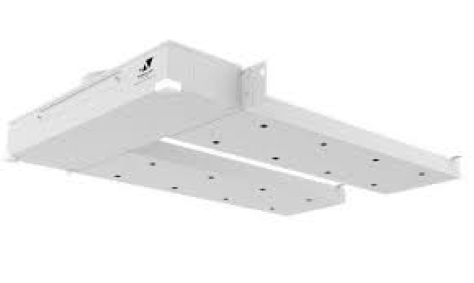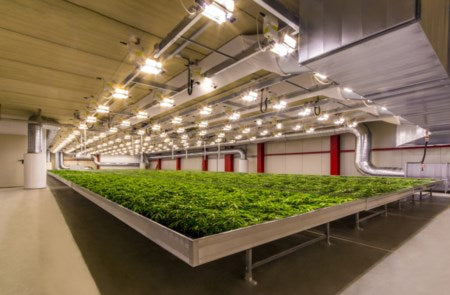By Josh Fabian
In Part I, we discussed selecting an air dehumidifier for a vertical farm.
Selecting a Heat Pump
For temperature control we choose a Pioneer 56,000 btu, 4.6 ton, 17.5 SEER, ducted central split air conditioner heat pump system. While being highly efficient, this unit will also be able to condition a large growing area. For our 20’x24’ space we will have 4 vent drops, and then a large 5th vent that will go outside of our room into the 3rd floor of the building we occupy. This will keep the grow room within our temperature range. Another added benefit of this design is we did not have to spend extra money to over-insulate our grow box because we are utilizing the buildings insulation. Also, the system is capable of providing heat, if needed, in winter. With the system, we can focus the cool air into the fans that then move it evenly across the crop. Ultimately, a split system and not a central air system was chosen due to its scale and cost. The size of the split system was chosen based on the heat loads generated from surrounding factors such as the lights, fans, and the regional climate effects on the space.

Selecting a Circulation System
To achieve dispersion of cool dry air we are utilizing a system that is built into our Pipp racking. This system was designed by Vertical Air Solutions. We direct our cool air into the side of the racking that has the fans. Then, the fans take this air and apply it evenly across the crop through ductwork that is built into the racking. This eliminates the disruption of the moisture barrier that occurs in the canopy. So, not only allowing for proper gas exchange on leaf surface, it also protects against environments that favor pathogen development.
We also do not want the air from the split unit going directly into the circulation system fans without first being mixed into the room fully. This can occur by using panels that block the airflow from directly blowing onto the crop and using HAF fans to mix the room air thoroughly, including over the dehumidifier before letting the Vertical Air Solutions system pump it into the plant canopies.

Air movement is very important for successful crops growing in a vertical farm. These are some ways we have tackled this, and we hope you benefit from understanding the thought process that went into the design.
You can follow more insights from our partnership with Glens Falls and others committed to the Glens Falls Vertical Farm Public Pilot here.


